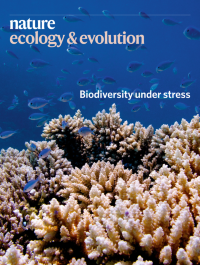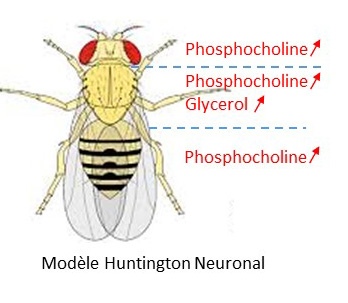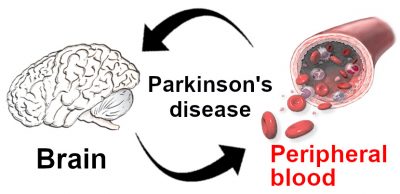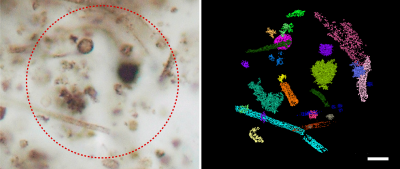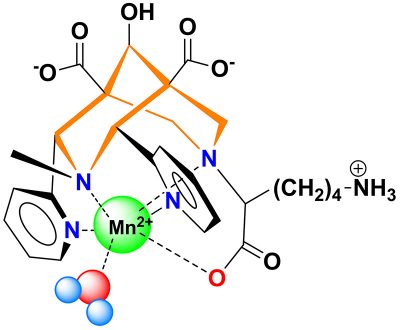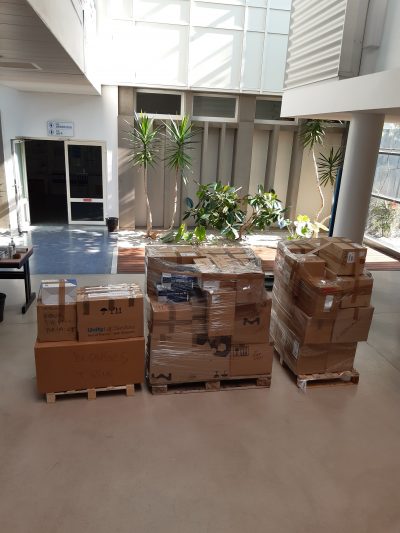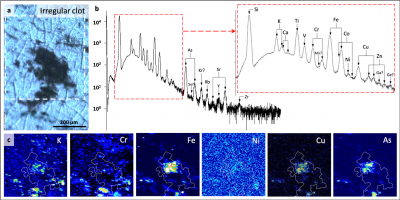Find here all the news from the CBM and beyond
Filtrer par
En faveur de la biodiversité
Des solutions pour conserver et restaurer la biodiversité
In favor of biodiversity
Solutions for the conservation and restoration of biodiversity
Creation of a predictive model of metabolic changes characteristic of neurodegenerative diseases
Researchers have created a predictive model based on the detection of changes in metabolite concentration resolved by ¹H high-resolution MAS NMR
Mise en évidence de biomarqueurs permettant une discrimination entre différentes maladies neurodégénératives dans un modèle animal
Des chercheurs ont utilisé la spectroscopie RMN Haute Résolution en Rotation à l’Angle Magique (HRMAS) pour caractériser et localiser in vivo les métabolites spécifiques de plusieurs maladies neurodégénératives modélisées chez la Drosophile
Achille Le Bel Grand Prize awarded to Eva Jakab Toth
The Achille Le Bel Grand Prize, awarded by the Société Chimique de France, rewards internationally recognized works.
Grand Prix Achille Le Bel décerné à Eva Jakab Toth
Le Grand Prix Achille Le Bel, attribué par la Société Chimique de France, récompense des travaux reconnus au niveau international.
Expression perturbée de gènes d'autophagie dans le sang de patients atteints de la maladie de Parkinson
Un dérèglement, de l’expression des gènes d’autophagie nécessaires à l’élimination d’agrégats protéiques neurotoxiques, observé dans la maladie de Parkinson, est également directement détectable dans le sang des patients
Disturbed expression of autophagy genes in blood of Parkinson's disease patients
A dysregulation in the expression of autophagy genes necessary for the elimination of neurotoxic protein aggregates, observed in Parkinson's disease, is also directly detectable in the blood of patients
Dévoiler des formes de vie vieilles d'un milliard d'années avec une vision aux rayons X
Des études synchrotron révèlent des détails sans précédent de très anciennes traces de vie en 3D. Des bactéries fossilisées de 1,9 milliard d'années ont été imagées dans un fragment de roche par tomographie assistée par rayons X ptychographique.
Unveiling billion-year old life forms with X-ray vision
Synchrotron-based studies reveal unprecedented details of some of the most ancient traces of life in 3D. Fossilised bacteria 1.9 billion years old were imaged in situ in a fragment of rock by Ptychographic X-rays Computed Tomography documenting details of preservation not previously observed.
Des réseaux organométalliques pour l’émission proche-infrarouge des lanthanides
Une nouvelle approche pour sensibiliser la luminescence proche-infrarouge des lanthanides basée sur l’utilisation de la cavité de réseaux organométalliques
Organometallic networks for the near-infrared emission of lanthanides
A new approach to sensitize the near-infrared luminescence of lanthanides based on the use of the cavity of organometallic networks
Volontaires
Des agents du CBM en renfort au CHRO
Le manganèse : un agent double pour l’imagerie ?
Le manganèse est un métal biocompatible, intéressant à la fois pour l’IRM et pour la tomographie par émission de positron. L’alliance du Mn2+ avec un ligand bispidine conduit à une inertie cinétique inégalée et permet d’envisager une utilisation in vivo sans risque de toxicité.
Manganese: A double agent for imaging ?
Manganese is a biocompatible metal ion, with great interest for MRI and PET. The alliance between Mn2+ and a bispidine ligand leads to an unprecedented kinetic inertness, which might enable its in vivo use without any toxicity risk.
Modélisation de l’épidémie
Matériels d’urgence pour le CHRO
Lettre d'actualité du CBM n° 20 - Avril 2020
Comprendre l’influence de la chimie de l’océan sur les premiers écosystèmes terrestres en étudiant les métallomes, ces éléments métalliques nécessaires au vivant.
Une nouvelle approche pour étudier les traces de vie ancienne : utiliser la distribution des éléments traces métalliques et de la matière carbonée
Metallomics in geological time: trace element biosignatures evidence the influence of ocean chemistry on Earth’s earliest ecosystems
A new way of looking at ancient life: using trace element distributions co-located with biological carbonaceous materials in some of Earth’s oldest rocks

